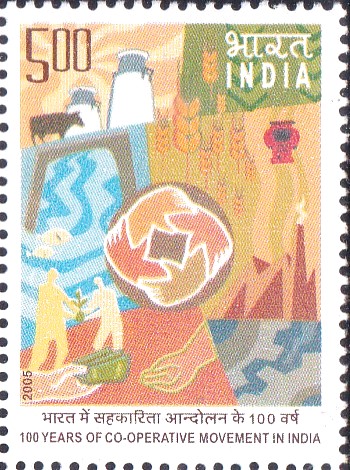
Cooperative Movement in India
A commemorative postage stamp on the 100 Years of the Indian Co–operative Movement :
 Issued by India
Issued by India
Issued on May 8, 2005
Issued for : The Department of Posts is happy to issue a commemorative postage stamp on the Centenary of the Cooperative Movement in India.
Credits :
Stamp, FDC : Kamleshwar Singh
Cancellation : Alka Sharma
Type : Stamp, Mint Condition
Colour : Multicolour
Denomination : 500 Paisa
Print Quantity :
Stamps : 0.8 Million
Printing Process : Photogravure
Printer : India Security press, Nashik
About :
- The concept of cooperation can be traced to our ancient Vedas and Upanishads. It was embedded in our past as an economic form of governance.
- Towards the end of the 19th century, the problems of rural indebtedness and the consequent conditions of farmers created an environment for the cooperative societies. The farmers found the cooperative movement an attractive mechanism for pooling their meager resources for solving common problems relating to credit, supplies of inputs and marketing of agricultural produce. The experience gained in the working of cooperatives led to the enactment of the first cooperative law of India. ‘The Cooperative Credit Societies Act, 1904’ and the ‘Agricultural Credit Cooperative Society’ of Kanaginahal Village of Gadag District in Karnataka was the first cooperative society formed under this Act. This was launched on 8th May 1905 by the villagers of Kanaginahal under the leadership of Shri Siddanagowda Sannaramanagowda Patil with the initial share capital of rupees two thousand. His efforts led to formation of cooperative societies all over the country. In the post-independence era with the adoption of economic planning, cooperative movement was recognised as an important and preferred institutional framework for economic development and social justice.
- Over the years, cooperative movement has achieved phenomenal growth with multi-dimensional development of cooperatives in almost all conceivable area of economic development. Today, Indian Cooperative Movement is the largest in the world having more than half a million cooperative societies with a membership of about 230 million. The cooperatives have covered 100 percent of villages and 75 percent of rural households and have created a formidable base for themselves in various segments of the Indian economy reflected by credit and banking, marketing, processing, distribution, dairy, storage, handloom, handicrafts, fisheries, sugar, hospitals, tourism, housing, labour etc.
- Cooperatives are disbursing 46 percent of total agricultural credit and are producing 28 percent of total fertiliser along with fertiliser distribution of about 36 percent. In the production of sugar the cooperative share of the market is about 59 percent and in the marketing and distribution of cotton they have a share of around 60 percent. In the field of housing as well, cooperatives are playing a dominant role especially in the urban areas. The consumer cooperatives are becoming the backbone of the public distribution system. In the field of milk production, India stands first in the world. This has been achieved mainly by following the cooperative methodology.
- The National Cooperative Union of India is the apex organisation promoting the cooperative movement in the country. The role of cooperatives had acquired a new dimension in the changing scenario of globalisation and liberalisation of economy and cooperatives, at all levels, are making efforts to reorient themselves according to the market demands. The Government of India has initiated several measures to strengthen and revitalise the cooperative structure in the country including constitutional amendment in order to ensure the autonomous, democratic and professional functioning of these institutions and ultimately to improve the quality of life of the people.
- Text : Based on material given by the proponent.


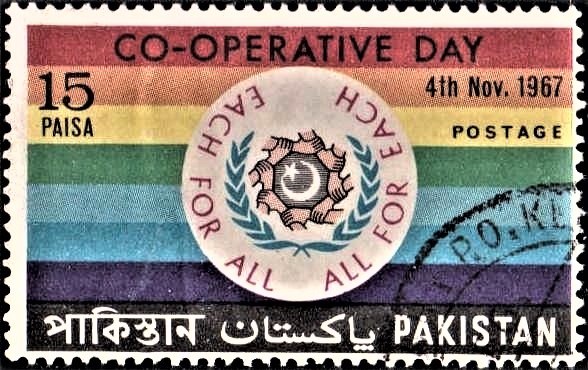

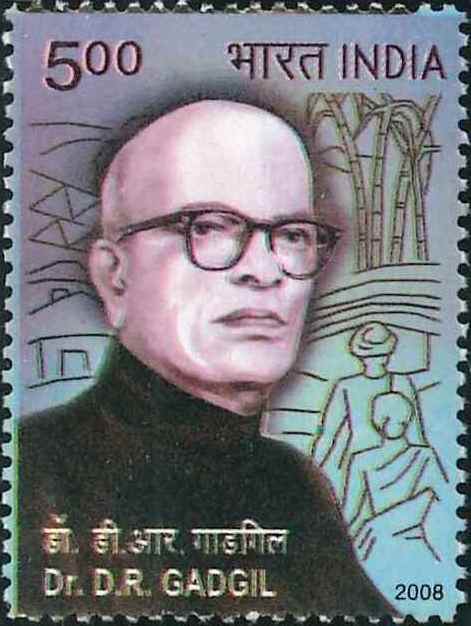
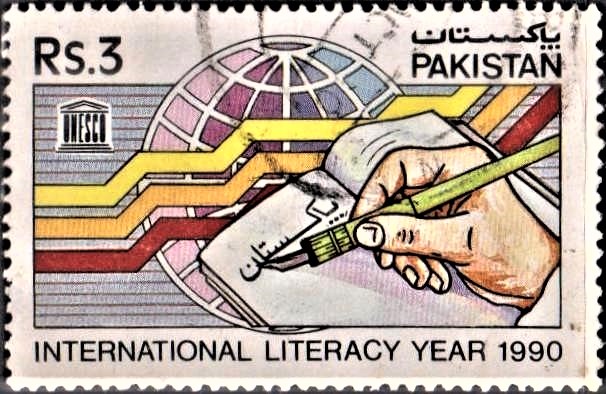

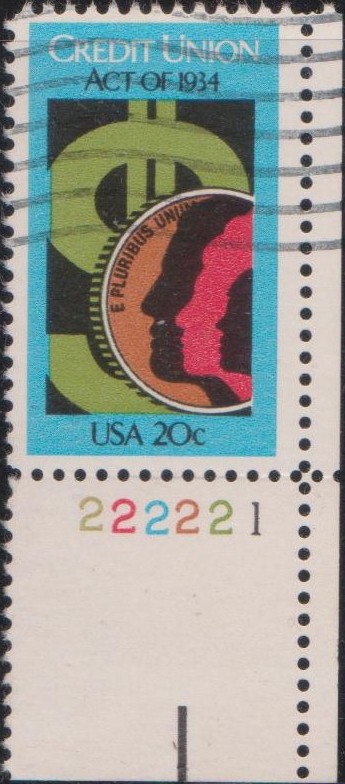
[…] He started organising village and agriculture cooperatives as early as 1945. Strengthening the cooperative movement remained a life-long pre-occupation for him. He was also a proponent of the Panchayati Raj […]
[…] he is really remembered for is his association with the co-operative movement in India. He was very much a man of action and felt that economic theories should be tested in real […]